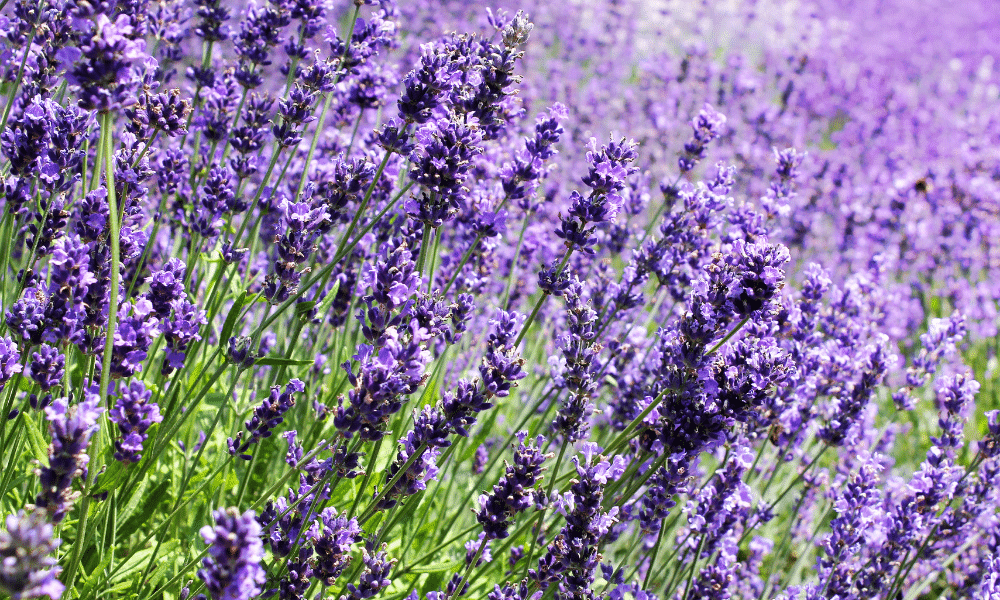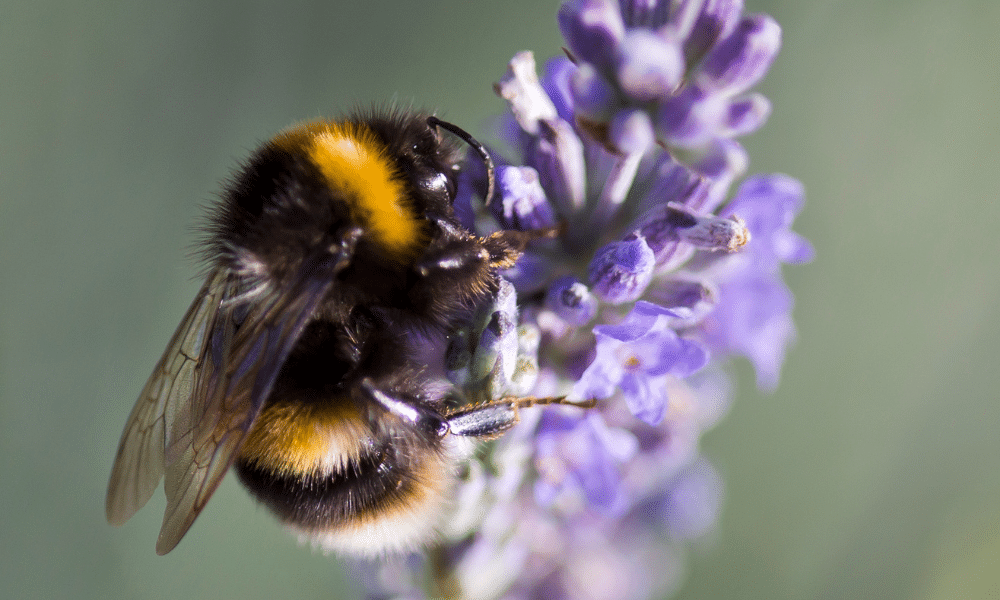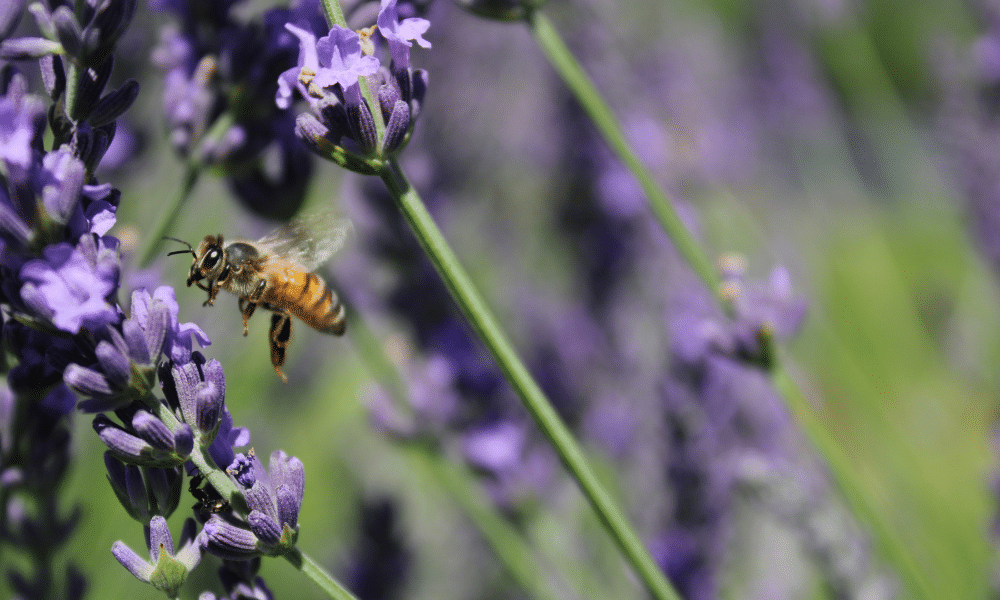Ask any gardener which plant attracts bees and most will instinctively go with lavender. No matter where you plant lavender, it will draw in bees from far and wide. But, do all lavender plants attract bees or do they need to be certain varieties?
Yes, all lavender plants will attract bees. However, some lavender varieties are more effective and will provide more benefits to bees than others.
Ultimately, if your goal is to attract bees to your garden then popping to your local garden centre or DIY store, grabbing the first lavender plant you find and sticking it in the ground at home will work to attract some bees.
Which Lavenders Attract Bees?
Fortunately, the choice of lavender you can grow to attract bees is extensive. In fact, bees are attracted to English, French and hybrid varieties of lavender. You can’t really go wrong when it comes to planting lavender to attract bees.
However, if you want specific names, then here are a few options worth considering:
- Imperial Gem English Lavender
- Lullaby Blue English Lavender
- Munstead English Lavender
- Wendy Carlile English Lavender
- Provencal French Lavender
- Snowman French Lavender
- Spring-Break Princess French Lavender
- Edelweiss Hybrid Lavender
- Backhouse Purple Hybrid Lavender
- Anniversary Bouquet Hybrid Lavender

But which lavender is best for bees? Unfortunately, this is an impossible question to answer as it really depends. It depends on your garden conditions. It depends on the bee variety. It depends on the time of year.
If you want to cast a wide net and attract as many bees as possible then consider planting different varieties of lavender throughout your garden. It can be a good idea to plant them apart to avoid any hybridisation of plants in future which can negatively impact appearance and scent.
The other thing to do when you visit your garden centre is to look at which lavender is covered in bees and simply go ahead and buy that pot of lavender. The bees will have done the validation for you!
This rule applies to any plant. If you want to know which plants attract bees in your area then have a walk around your local neighbourhood and have a sneak peek at people’s front gardens. If you can see a plant covered in bees then, chances are, this will work in your garden too!
Why are Bees Attracted to Lavender?
Bees are attracted to plants for a number of reasons: Colour, fragrance and nectar. Lavender delivers on all 3 of these.
The bright purple and blue shades of lavender are an instant hit with bees. Bees don’t have the best eyesight in the insect world so rely on bright, vibrant colours to spot things from afar.
Want to Attract Bees to Your Garden?
We’ve Put Together a Complete Guide to Attracting Bees to Your Garden Including Our Top 14 Plants You NEED to Have in Your Garden:
The sweet, perfumed scent of lavender is another win that they can detect for miles. As their eyesight isn’t great, they rely on their sense of smell to detect nectar-rich plants from miles and miles away. Some bees have a sense of smell 100x more powerful than a human’s sense of smell!
Finally, lavender is a bountiful source of nectar (and pollen). The great advantage of lavender is that it produces a lot of nectar, early in the morning for an extended period of the year. Just one lavender plant can be a regular supply of nectar to bees.
Are All Bees Attracted to Lavender?
Although most bees will find themselves gravitating toward lavender, it is more popular amongst certain types of bees who find extracting nectar from the flowers easier.
If you sit and watch which types of bees land on your lavender plants, you’ll find that bumblebees are more common than honey bees. As nectar is hidden away in tube-shaped flowers, bees need longer tongues to extract it. Honey bees tend to have shorter tongues compared to bumblebees.
This doesn’t mean that honey bees will avoid lavender. But it won’t be at the top of their list of preferences when hunting around your garden. If they can find more open flower heads that are easier to get in and out of then they’ll go to these first.

Is Lavender Good for Bees?
Absolutely! Bees need nectar. They use nectar to provide them with energy and to turn into honey which is a bee’s food source during the colder, winter months. Without nectar, bees would simply not survive.
As lavender provides such an extensive supply of nectar to bees, it’s particularly good for them. But a benefit that many people ignore is when that nectar is supplied.
In the middle of summer, there is what is known as the gap. This is when early summer flowers are fading but late summer flowers are yet to bloom. This is when bees will struggle to find ample nectar. Lavender, however, blooms during this gap to ensure bees still have a source of nectar.
The secondary (and rather selfish) benefit of lavender is that it provides a subtle perfumed flavour to the honey that the bees produce, creating natural lavender honey that is delicious.
FAQs
Do you have further questions about bees and whether they love all lavender types? Then have a look over these FAQs:
Nearly all bees are attracted to lavender as the purple colour draws them in – it’s the colour bees can see easiest. However, some bees prefer it more than others. Bumblebees are huge fans of lavender.
Although honey bees do like lavender, they prefer nectar that’s easier to access on flatter flower heads. Lavender requires long tongues to access the hidden away nectar which honey bees tend not to have.







